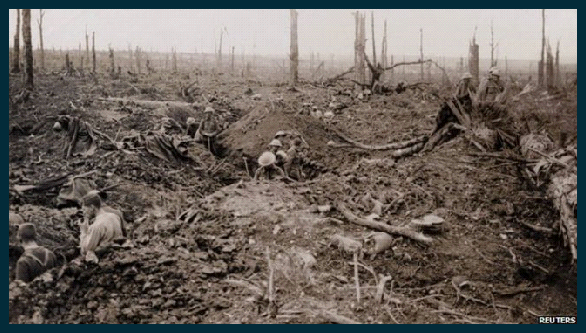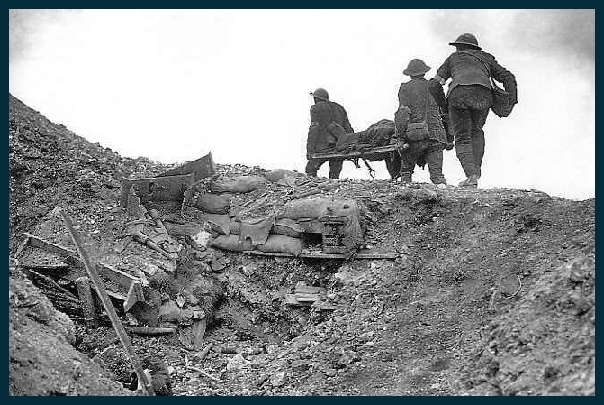Copyright © All rights reserved.



William Boyes

William Boyes was the older brother of Ernest Boyes, whose life is also recorded on this site, and the second son of William and Maria Trenham (nee Harper)Boyes who married in the second quarter of 1877 in the Malton area. He was born in Broughton and his birth was registered at Malton in the second quarter of 1883.
In 1891 the family was living in Broughton and William senior had work as a general labourer.
1891 Census resident at Broughton, Malton
William, Boyes, Head, Married, Male, 38, General Labourer, Norton, Yorkshire, England
Maria, Boyes, Wife, Married, Female, 35, -
Louisa J, Boyes, Daughter, -
John H, Boyes, Son, -
William, Boyes, Son, -
George A, Boyes, Son, -
In 1901 William and Maria were living at the Waterworks Cottages on Sheepfoot Hill in Malton with their five children and William was working as a carter for the Town Council.
1901 census – resident at 4, Water Works Cottage, Malton
BOYES, William, Head, Married, M, 48, Carter To The Malton Urban Council, Norton Kent, (sic)
BOYES, Maria, Wife, Married, F, 45, , Sinnington Yorkshire,
BOYES, John Henry, Son, Single, M, 20, Apprentice Cabinet Maker, Broughton Yorkshire,
BOYES, William, Son, Single, M, 17, Apprentice French Polisher, Broughton Yorkshire,
BOYES, George Alfred, Son, Single, M, 11, , Broughton Yorkshire,
BOYES, Caroline, Daughter, Single, F, 7, , Malton Yorkshire,
BOYES, Ernest, Son, Single, M, 6, , Malton Yorkshire,
William junior married Alice Riley in the third quarter of 1905 in York and they had a son Frederick in 1908. According to the census he was born in York but the BMD registers say the birth was registered in Malton.
In 1911 they were living in Garden Street, York where William was working as a French Polisher.
William enlisted at York in the 7th (Service) Battalion of the Yorkshire Regiment which was formed at Richmond in September 1914 as part of K2 and attached to 50th Brigade, 17th (Northern) Division. After receiving an order that the Division would be retained for home defence (subsequently cancelled), advance parties left for France on 6 July. Main embarkation began on 12 July and on 14th July 1915 they landed at Boulogne before moving to concentrate near St Omer. The Division spent the rest of 1915 initially in a period of trench familiarisation and then holding the front lines in the southern area of the Ypres salient.
February 1916 saw the battalion moving into trenches at Dickiebusch and fighting at the Bluff (south east of Ypres on the Comines canal), intersperced with periods of rest in billets and camps behind the line. The pattern continued until they moved to Armentieres on 23rd March where they remained till late May before moving to Mentques for further training.
On 13th June they moved into trenches just south of Fricourt, where they came under fire with “canisters”, oildrums filled with explosives, which inflicted considerable casualties.
On the 27th they moved into deeply water-
Training continued interspersed with some maintenance work until they returned to the trenches at Hebuterne on 18th October for a projected attack, subsequently cancelled. They returned to training and maintenance, spending the rest of October in camp.
At the beginning of November they took over the front line trenches between Gueudecourt and Lesboefs and on 3rd took part in a small but successful attack on the German lines while coming under heavy fire. This was followed by far less successful attacks on 5th November when they suffered considerable losses. “The condition of the trenches, in many places 3-
They returned to the trenches on 26th December near Lesboefs for a few days before moving to Gueillemont, where they started 1917. Back in the trenches, by 3rd January they found conditions greatly worsened by the constant rain – it was well-
At some point in the course of this action William seems to have been killed. The register of effects states that he was presumed death on or after 8th February 1917. He has no marked grave and like so many others is commemorated on the Thiepval Memorial.

By the 7th July they had moved into Fricourt Wood with the aim of supporting further attacks on German forces in Mametz Wood. Over the next few days they took part in largely unsuccessful attacks in Mametz Wood and Quadrangle Alley. They were relieved on 11th July and moved by train to Molliens-
On 8th August they moved into the old German 2nd line near Delville Wood where they spent their time digging and consolidating trenches, but after a week they were on the move again, reaching Hebuterne by the 19th. Here they settled down to working on the trenches improving the trenches by day and laying wire by night, activity almost exactly mirrored by the Germans in the opposite trenches. This continued well into September when they moved to Bayencourt and resumed training. On 12th September they returned to Hebuterne and began work preparing trenches for an anticipated attack. This only lasted a few days before they resumed training, somewhat hampered by the continuation of torrential rain.
